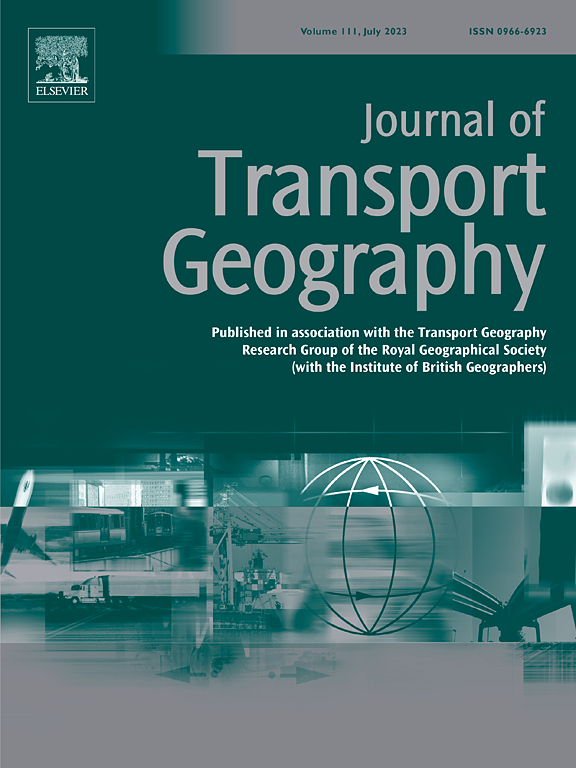How does transport scarcity affect the everyday lives of women? Herstories of daily mobility in Santiago de Cuba
IF 5.7
2区 工程技术
Q1 ECONOMICS
引用次数: 0
Abstract
Daily mobility in the city of Santiago de Cuba relies almost entirely on public transport (PT) and walking, making it one of the least carbon-intensive urban transport systems globally. Nevertheless, the local PT network faces numerous challenges. Material scarcity, which has persisted since the 1990s, has intensified in the last five years due to the tightening US-imposed embargos, recurring oil shortages, and the COVID-19 pandemic. The lack of fuel, vehicles, and spare parts has led to transport scarcity, the severe reduction of the quality of PT services. In this context, we aim to explore (1) how women experience mobility within the context of transport scarcity, and (2) how transport scarcity affects the everyday lives of women—attending to their travel behaviour, experiences, coping strategies, and preferences. Additionally, we seek to explain how these mobility challenges influence other social roles and engagement of women passengers in their daily activities. We observe that women, who frequently combine the roles of wage earners and primary caregivers, often experience heightened levels of stress and a shortage of sleep, due to their constrained time availability. The unreliability and unpredictability of the local transport system exacerbate the difficulty of planning daily activities. Mobility typically requires a substantial commitment of time and effort, which passengers can mitigate only by significantly increasing their expenses on mobility. Waiting at a PT stop demands an active engagement, involving a constant search for travel opportunities. This process is often facilitated by mutual support among passengers, and interactions with transport workers. Passenger experiences frequently occur in overcrowded and uncomfortable conditions, which are particularly challenging for senior, pregnant, or menstruating women, as well as women travelling with children.
交通短缺如何影响女性的日常生活?她在古巴圣地亚哥的日常活动
古巴圣地哥市的日常交通几乎完全依靠公共交通和步行,使其成为全球碳密度最低的城市交通系统之一。然而,本地PT网络面临着诸多挑战。自上世纪90年代以来一直存在的物资短缺,在过去5年里,由于美国收紧禁运、石油短缺反复出现以及新冠肺炎大流行,加剧了物资短缺。燃料、车辆和备件的缺乏导致运输短缺,严重降低了PT服务的质量。在此背景下,我们的目标是探索(1)女性在交通稀缺的背景下如何体验流动性,以及(2)交通稀缺如何影响女性的日常生活——关注她们的出行行为、经历、应对策略和偏好。此外,我们试图解释这些流动性挑战如何影响女性乘客在日常活动中的其他社会角色和参与。我们观察到,由于时间有限,妇女经常同时担任挣钱者和主要照顾者的角色,她们经常感到压力加剧,睡眠不足。当地交通系统的不可靠性和不可预测性加剧了规划日常活动的困难。出行通常需要投入大量的时间和精力,乘客只能通过大幅增加出行费用来减轻这种负担。在PT站点等待需要积极参与,包括不断寻找旅行机会。乘客之间的相互支持以及与运输工人的互动往往促进了这一过程。乘客体验经常发生在拥挤和不舒服的情况下,这对老年人、孕妇、经期妇女以及带孩子的妇女来说尤其具有挑战性。
本文章由计算机程序翻译,如有差异,请以英文原文为准。
求助全文
约1分钟内获得全文
求助全文
来源期刊

Journal of Transport Geography
Multiple-
CiteScore
11.50
自引率
11.50%
发文量
197
期刊介绍:
A major resurgence has occurred in transport geography in the wake of political and policy changes, huge transport infrastructure projects and responses to urban traffic congestion. The Journal of Transport Geography provides a central focus for developments in this rapidly expanding sub-discipline.
 求助内容:
求助内容: 应助结果提醒方式:
应助结果提醒方式:


